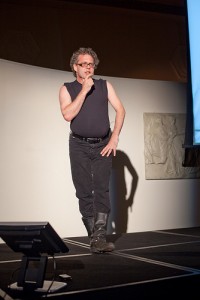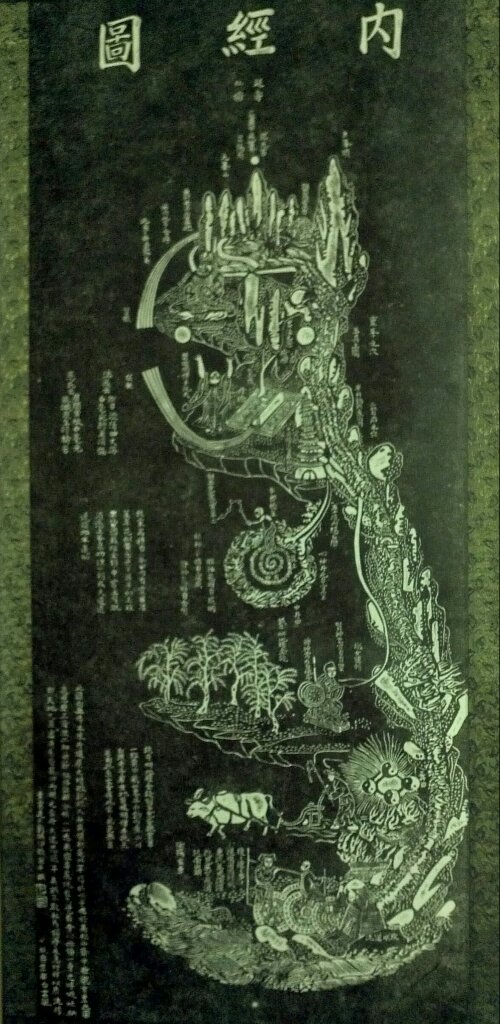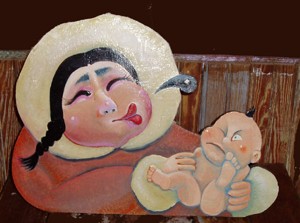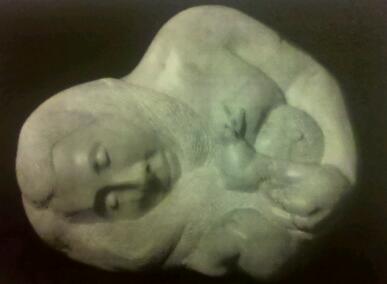
John T. Unger
John T. Unger has clearly led a fiery, colorful life. He shared several personal stories with us in one of his talks at last weekend’s World Domination Summit in Portland, Oregon, some dramatic and maybe even a little crazy sounding, but all authentic aspects of his personal dynamic:
In his youth, he won the championship swingset jump, and he still says his hip is not the same. He’s been attacked by a bald eagle. He and his buddies used to play “Catch the Spear”, tossing hand-sharpened ash poles back and forth for fun (Listen!). He has roller-skated down a Swiss Alp, never having roller-skated before. (He didn’t know how to stop, but once he overtook a moving car he was able to grab on and slow to a stop.) As part of his young adulthood, he has lived in a big-ass red truck under the Roosevelt bridge (“It was nice–it had a queen-size bed in it!”), making music and writing poetry. He once spent ten long minutes with a loaded gun to his head, held by an angry and deranged cab driver, during which John talked him out of pulling the trigger.
As he put it, discerning the difference between an emergency and a problem, and deciding to make the difference between disaster and opportunity are critical skills we should all practice, learn, and refine.
John talked about using the principles of Tai Chi to make use of the momentum of a disaster by riding its energy forward rather than being crushed by it. He did that with the profound gunpoint incident, deciding not to sweat the less important stuff, and instead focusing on his creative artistry.
He has been making art professionally since about 1995, and has made a full-time living as an artist since 2000. His medium is mainly working in “big steel stuff”, creating signature firebowls.  Speaking to our group of ~500 entrepreneurs at the World Domination Summit, Unger said “there are layers of meaning encoded in the materials. Like I’ll use a propane torch to cut flame shapes in a former industrial container for flammable gas, to make a fire bowl you can have a fire in– even a gas fire!”
Speaking to our group of ~500 entrepreneurs at the World Domination Summit, Unger said “there are layers of meaning encoded in the materials. Like I’ll use a propane torch to cut flame shapes in a former industrial container for flammable gas, to make a fire bowl you can have a fire in– even a gas fire!”
Indeed, the materials John Unger uses are entirely repurposed. As he has said, “I believe creative re-use has the potential to spark new ways of looking at the world… if one thing can be turned into another, what else can we change? Successful recycled art encourages creativity in others— it’s alchemical, magical, subversive, and transformative by nature.”
On the way to a successful art career, he has been a poet and writer, a tech geek, a print and web designer, illustrator, industrial designer, musician, teacher, actor, set designer and even a paid guru once. Along the way, he has seized business, marketing, and legal aspects of his art, and learned how to master each one.
In his closing remarks, he added, “The first thing about business and marketing as an artist is, people lavish attention and money on you… What’s not to like?? The thing is, the minute somebody wants to buy your stuff, you realize you have at least that much in common– I like my art, they like my art… I’m a big fan of me, so are they…”
John T. Unger — What’s not to like?
Thank you, John!
Visit and see his work at www.JohnTUnger.com





 This wall hanging at the
This wall hanging at the 

